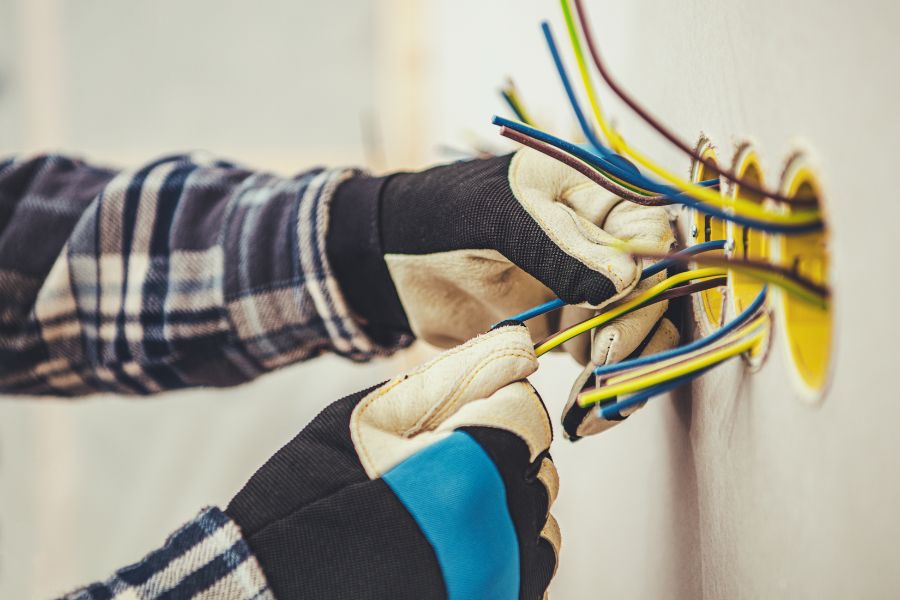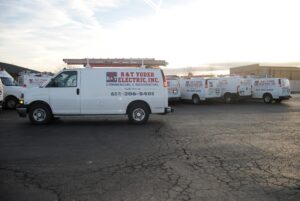
Older homes carry a certain charm—a tangible sense of history reflected in ornate moldings, hardwood floors, and timeless architecture. But beneath the surface of this nostalgic beauty often lies an outdated and potentially dangerous electrical system. The wiring hidden within those plaster walls wasn’t designed for today’s high-powered lifestyles. Flat-screen TVs, gaming consoles, modern HVAC systems, and kitchen gadgets demand more power than the old knob-and-tube wiring or brittle aluminum circuits can safely provide.
Electric rewiring isn’t merely about convenience; it’s about safeguarding your home, family, and appliances. Faulty wiring is one of the leading causes of residential fires, and older homes are particularly vulnerable. Comprehensive rewiring services not only modernize your home’s infrastructure but also ensure compliance with current safety standards, protecting both your investment and your loved ones.
Why Electric Rewiring is Crucial for Older Homes
Aging wiring systems pose risks that extend far beyond flickering lights or a tripped breaker. They can compromise safety, efficiency, and even insurance eligibility.
Key Reasons to Consider Rewiring:
- Fire Prevention:
Outdated wiring is often frayed, damaged, or improperly insulated. Such defects can cause sparks that ignite fires, especially if circuits are overloaded. - Improved Energy Efficiency:
Modern wiring and upgraded panels reduce energy waste, ensuring appliances run more efficiently and lowering electricity bills. - Increased Electrical Capacity:
Older homes often have 60- or 100-amp systems, which struggle with modern power demands. Upgrading to a 200-amp panel supports modern appliances without overloads. - Code Compliance:
Electrical codes evolve to improve safety. Rewiring ensures your home meets current regulations, especially critical if you’re planning renovations or selling the property. - Insurance Eligibility:
Many insurance companies refuse coverage for homes with outdated wiring, particularly those with knob-and-tube or aluminum systems. Rewiring helps maintain or secure insurance coverage.
Did You Know?
According to the National Fire Protection Association (NFPA), electrical malfunctions account for over 45,000 home fires annually in the United States.
Signs Your Older Home Needs Electric Rewiring
Not every homeowner knows when their electrical system requires attention. Here are the telltale signs that rewiring is overdue:
1. Frequent Circuit Breaker Trips
Breakers are designed to shut off power when circuits are overloaded. If tripping becomes routine, it indicates the system is struggling to handle your home’s electrical load.
2. Burning Smells or Discolored Outlets
An acrid, burning odor near outlets or the electrical panel suggests overheating wires. Discoloration or scorch marks are urgent indicators of potential fire hazards.
3. Flickering or Dimming Lights
Lights that flicker or dim without reason often point to worn wiring, poor connections, or overloaded circuits.
4. Outdated Wiring Types
Homes built before the 1970s may have knob-and-tube or aluminum wiring—both notorious for their fire risks.
Check For:
- Knob-and-Tube Wiring: Typically found in homes built before 1950.
- Aluminum Wiring: Common in homes from the 1960s and ’70s, prone to loosening and overheating.
5. Electrical Shocks or Buzzing Sounds
Minor shocks from outlets or switches, as well as buzzing or crackling sounds, indicate wiring issues that require immediate attention.
6. Limited Outlets
Older homes often have few outlets, forcing reliance on extension cords—an unsafe practice that increases fire risks.
Fact:
The NEC now recommends outlets every 6 to 12 feet along walls to minimize cord use.
The Electric Rewiring Process: Step-by-Step Overview
Rewiring an older home requires more than replacing wires. It’s a meticulous, multi-step process designed to enhance both safety and functionality.
1. Initial Assessment and Planning
- Inspect existing wiring, outlets, panels, and junctions.
- Identify outdated or damaged components.
- Discuss future needs, such as additional circuits for appliances or smart home systems.
2. Permit Acquisition and Code Compliance
- Secure necessary permits based on local regulations.
- Develop a rewiring plan that adheres to NEC guidelines.
Insight:
Homes undergoing major rewiring often require upgrades to 200-amp service to accommodate modern energy consumption.
3. Power Shutdown and Safety Preparation
- Turn off the main power supply.
- Set up temporary circuits if occupants need limited power access during the project.
4. Removal of Old Wiring
- Access walls, ceilings, and floors to remove outdated wiring.
- Replace knob-and-tube or aluminum wiring with modern copper conductors.
Pro Tip:
Professional electricians use advanced tools like thermal imaging to locate hidden wires without excessive drywall removal.
5. Installation of New Wiring and Components
- Run new wiring through conduits and secure connections.
- Install modern outlets, switches, and junction boxes.
- Upgrade panels and install circuit breakers equipped with GFCI and AFCI protection.
6. Testing and Inspection
- Conduct voltage, continuity, and insulation resistance tests.
- Schedule an inspection with the local electrical authority to certify compliance.
Common Wiring Types in Older Homes (and Why They Need Replacement)
1. Knob-and-Tube Wiring (Pre-1950s)
- Characteristics: Ceramic knobs and tubes running ungrounded wiring through walls.
- Risks: No grounding, brittle insulation, and high fire potential.
2. Aluminum Wiring (1960s-70s)
- Characteristics: Lightweight aluminum wires prone to expansion and contraction.
- Risks: Loose connections, overheating, and increased fire risk.
3. Cloth-Insulated Wiring
- Characteristics: Wires wrapped in fabric insulation.
- Risks: Deteriorates over time, exposing live conductors.
Solution:
Replacing with modern, PVC-insulated copper wiring ensures safer, more efficient power delivery.
Rewiring Strategies for Different Areas of the Home
Not all rooms have identical electrical needs. Here’s how rewiring is tailored to various spaces:
Bathrooms:
- Install GFCI-protected outlets near sinks.
- Wire for heated floors, exhaust fans, and modern lighting fixtures.
Kitchens:
- Dedicated circuits for high-wattage appliances like ovens and microwaves.
- Install tamper-resistant outlets and USB-equipped receptacles.
Living Rooms:
- Add outlets along walls to accommodate entertainment centers.
- Install dimmer switches and smart lighting controls.
Basements and Garages:
- Install GFCI outlets to handle moisture exposure.
- Consider adding 240V circuits for power tools or HVAC systems.
Energy Efficiency Benefits of Rewiring
Modern wiring techniques don’t just enhance safety—they also improve energy efficiency.
How Rewiring Boosts Efficiency:
- Reduced Power Loss: Copper wiring offers better conductivity than aluminum, minimizing energy waste.
- Smart Home Integration: Modern wiring can accommodate home automation systems for optimized energy use.
- Energy-Efficient Lighting: Upgraded wiring supports LED fixtures and motion-activated lighting.
Tip:
Installing whole-home surge protectors during rewiring prevents damage from sudden power spikes.
The Dangers of DIY Electric Rewiring
Electrical work might seem straightforward in online tutorials, but DIY rewiring carries substantial risks.
Why DIY is Dangerous:
- Electrocution Hazards: Live wires can cause severe injury or death.
- Fire Risks: Incorrectly installed wiring can spark hidden fires within walls.
- Code Violations: Non-compliant work may void insurance policies or complicate future home sales.
Stat:
The Consumer Product Safety Commission (CPSC) attributes thousands of home fires annually to improper wiring practices.
Hiring Professional Electricians: What to Look For
Choosing the right professionals for electric rewiring is paramount. Here’s what sets reliable electricians apart:
- Licensing and Certification: Verify state-issued credentials.
- Experience with Older Homes: Historic properties often present unique challenges.
- Up-to-Date Knowledge: Electricians should be familiar with current NEC requirements.
- Transparent Pricing: Request itemized estimates to avoid surprise costs.
FAQ Section
1. How long does electric rewiring take?
The process typically spans 3-10 days, depending on home size and wiring complexity.
2. Do I need to vacate my home during rewiring?
Not always. Electricians can often rewire room-by-room, although power disruptions are inevitable.
3. What’s the lifespan of modern electrical wiring?
PVC-insulated copper wiring can last 50 years or more with proper maintenance.
4. Will rewiring damage my walls?
Some drywall removal is necessary, but professionals minimize damage and handle repairs post-installation.
5. Is rewiring a home expensive?
Costs vary based on home size and wiring condition but typically range from $4,000 to $15,000.
An older home’s charm shouldn’t come with electrical hazards. Modern, code-compliant wiring ensures safety, efficiency, and convenience for years to come. Whether you’re restoring a century-old house or upgrading a mid-century gem, professional rewiring protects your property, your appliances, and most importantly, your family.







